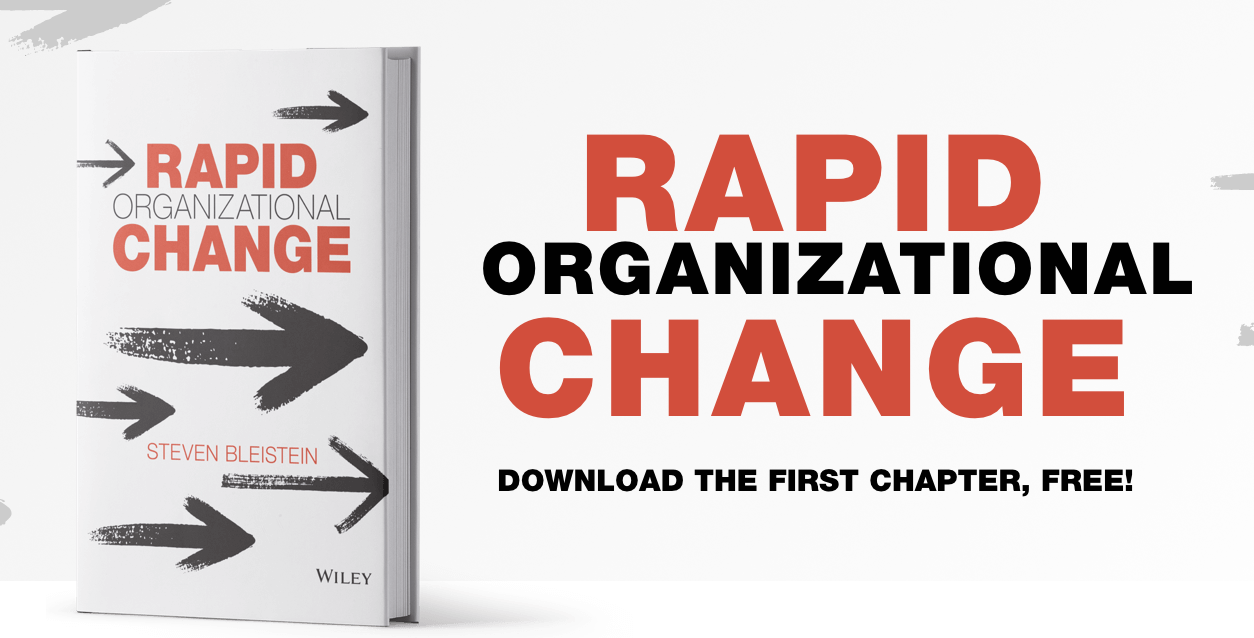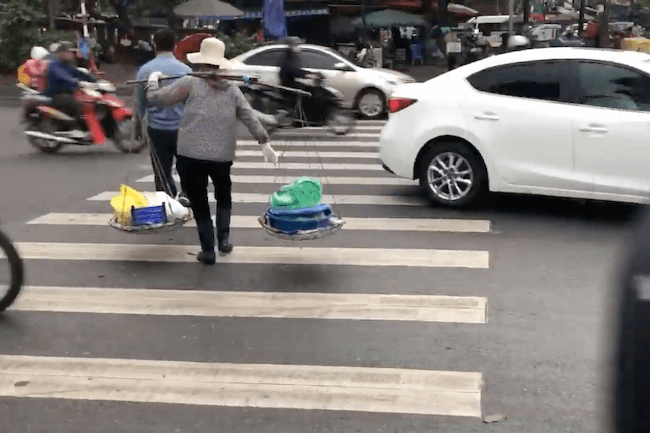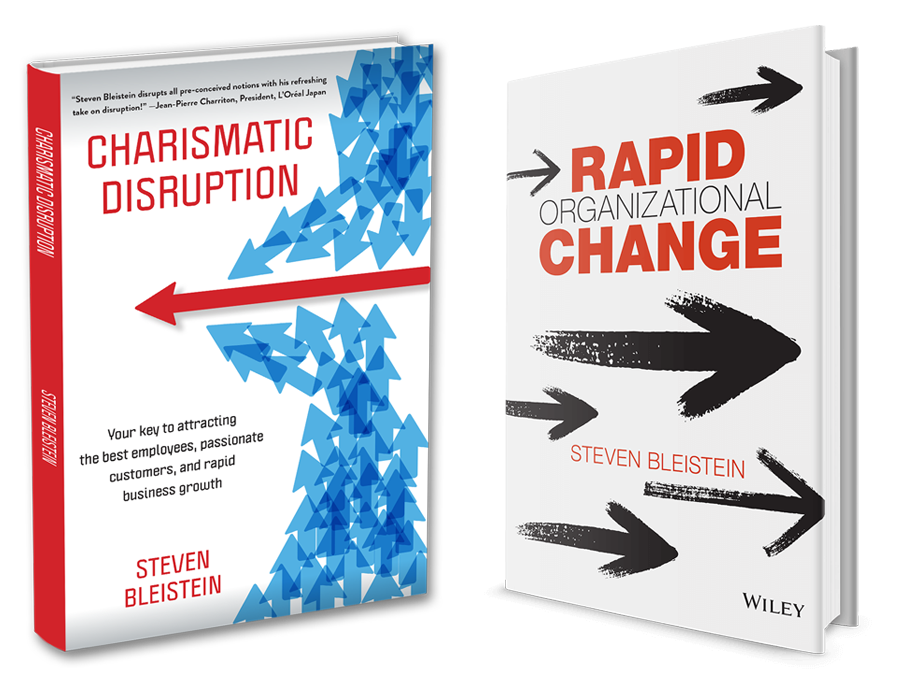[:en]There is no percentage in tentativeness. Success in strategic change belongs only to those who step into the fray. My recent visit to Hanoi reminded me of this, and below I explain why.
The streets of Hanoi are frenetic, the colors are vibrant, and the people make you want to know more about them. Walking around the city has its rewards, but seeing Hanoi on foot is not without its downside. Crossing the road in Hanoi is an ordeal for the uninitiated.
Traffic is a free-for-all, or at least that is how it appears. There are few traffic lights, and even at intersections where there are, the signals appear only optional for scooters and bikes. The flow of traffic is incessant. At one intersection, I waited nearly ten minutes looking for a break in scooters, cars, buses, trucks, and heavily loaded bicycles. The break never came.
Just as I was considering walking further up or down the road to find a better place to cross, an elderly Vietnamese woman walked up from behind me, and without a change in the cadence of her pace, to my horror, she stepped off the curb out into the traffic, barely giving a glance in either direction.
I imagined the worst—that she would be struck and injured, maybe even killed, the same fears holding me back at the curb, but nothing of the sort happened. The drivers of scooters and cars just maneuvered around her, most even without slowing down. She made her way steadily across the road in a straight line without changing her gait until she reached the opposite side—unscathed and unperturbed.
Business leaders considering a bold, strategic change are sometimes like I was, as if standing on the curb of a street in Hanoi. They contemplate the hazards ahead and are daunted by what they imagine might go wrong. They wait for ideal timing—buy-in from staff, approval from superiors, or some kind of assurance of success or at least lack of failure—which like a break in the traffic flow on a street in Hanoi, rarely if ever comes.
One CEO I know who had a bold initiative was worried his business would lose all its customers and be blacklisted in Japan if he made the changes he envisioned. His Japanese staff even warned him so! Another CEO worried all his Japanese staff would quit—at least that is what his Japanese HR director said. Yet another CEO worried his superiors would question his judgment, and he would self-sabotage his career. While each hesitated at first, all of these fears turned out to be unfounded in the end, just as my fears of what would happen stepping into traffic in Hanoi.
When crossing the street in Hanoi, the appearance of hazard is deceiving. You don’t accommodate the traffic. Rather, the traffic accommodates you—as long as you adhere to your objective, progressing in a straight line at a steady, predictable pace. Any rapid movement or sudden change in direction on your part in reaction to oncoming traffic only puts you in danger.
Leading strategic change in your business is much the same. One CEO I mentioned above stepped into the fray. He fired his company’s Japan distribution and implemented a new business model. His company was not blacklisted and customers remained loyal despite what others had warned. Instead, the company tripled its sales. Staff morale in the company saw a dramatic boost, as nothing boosts spirits better than success. Yet had the CEO merely remained on the curb looking for break in the traffic, he would still be there today—assuming the business survived.
The worst imagined hazards in strategic change are often more illusory than real. No need to accommodate your environment. Your environment accommodates you. Like crossing the road in Hanoi, reacting to what appears to be oncoming hazards only puts you at risk. It is uncompromising adherence to your course towards your objective at a steady pace that offers the greatest possibility of success.
It is uncompromising adherence to your course towards your objective at a steady pace that offers the greatest possibility of success. Share on XAre you contemplating a dramatic change in your business? Are you standing on the curb, looking for a break in the traffic to cross?
Take a page from an elderly woman in Hanoi. Don’t wait. Step into the fray. The environment will accommodate you as long as you make your way with tenacity.
As for me, I finally crossed the road in Hanoi, and all was fine. All will be fine for you too.
 [:ja]躊躇することには何の利点もありません。戦略的な変革を成功させる事ができるのも、困難と思われることにも躊躇う事なく立ち向かえる人々だけです。私は最近ハノイを訪れた時に、このことを改めて確信しました。
[:ja]躊躇することには何の利点もありません。戦略的な変革を成功させる事ができるのも、困難と思われることにも躊躇う事なく立ち向かえる人々だけです。私は最近ハノイを訪れた時に、このことを改めて確信しました。
ハノイの街は騒々しく、華やかに彩られており、そこに住む人々は自分のことを話す事が大好きです。そこを自分の足で歩き回ると色々な発見がありますが、その一方で困ることもあります。それはハノイで道を横断すること。初めてハノイを訪れる人にとって、それは試練とも呼べるでしょう。
ハノイの交通は混乱状態を極めているように見えます。信号などほとんどありませんし、たとえ信号のある交差点でも、原付バイクや自転車に乗る人達がそれに従ったり無視したり、といった状況です。道を行く車や自転車の流れが途絶えることもありません。ある時など、私は道を渡るため、原付、車、バス、トラック、重い荷を乗せた自転車などの流れがストップしないかと、10分近く待った末、諦めざるをえませんでした。
仕方なく道の少し先まで行くか戻るかして渡れる場所を探そうとしていた時のことです。年配のベトナム人女性が私の後ろからスピードを落とす事なく近づいてきたかと思うと、恐ろしいことに左右を確認することも殆どしないまま、歩道から降りて道を渡り始めたのです。
私は最悪の事態を頭に思い描きました。彼女はきっと車にはねられて怪我をするか、ひょっとしたら死んでしまうかもしれない。私自身そのような恐怖があったから、道を渡れないでいたのです。ところが実際のところはそんなことは起こりませんでした。原付バイクも車もスピードを落とさないまま単に彼女をよけてくれたのです。彼女は同じ足取りで真っ直ぐに進み、ちゃんと道の向こう側に渡る事ができました。怪我を負うことも取り乱すこともなく。
大胆な戦略的改革を考えるビジネスリーダーの方々の中には、ハノイの街で道を渡れないでいた私のような方が時々見受けられます。つまりこの先予想される困難やうまくいかない可能性のことばかり考えてしまうのです。彼らはスタッフからの賛同をもらったり、上司から承認してもらったり、成功する、或いは少なくとも失敗しないという何らかの確信などを得たいと考え、そのタイミングを待ち続けます。しかしハノイの途切れない車の波のように、そのようなタイミングが来ることは滅多にありません。
私の知っているあるCEOの方も、大胆なイニシアチブを進めたいと考える一方で、自分の描く改革を実行すれば現在の顧客は全て失い、日本でブラックリストに載せられるのでは、と危惧していました。彼の日本人の部下たちも同様なアドバイスをしていたのです。人事部長に改革プランを実行すれば日本人スタッフは全員辞めてしまいますよとアドバイスされて、それを心配していたCEOにも会った事があります。また別のCEOは、自分の判断が上司に疑問視され、自身のキャリアが台無しになるのでは、と恐れていました。この3人のCEOは最初はこのように躊躇していたわけですが、結局最後にはそのような心配は無用であった事がわかりました。私がハノイで道を渡ることに恐怖心を覚えていたのと同じですね。
ハノイの道を渡る時に感じられる危険性には惑わされますが、そこでは道を行く車などに従ったりしないものなのです。ハノイでは、自分の目的に忠実であり、ペースを変えずに真っ直ぐにしっかり歩き続けさえすれば、車の方があなたの邪魔をしないよう、道を空けてくれます。同時に、こちらに向かってくる車に反応して急に動きや進む方向を変えたりすれば、危ない目に会うでしょう。
ビジネスにおいて戦略的変革をリードする時も、同じ事が言えます。上に挙げたCEOのひとりは、思い切った改革を行いました。彼は自社の日本での小売ラインを排除し、新しいビジネスモデルを取り入れました。それでも周りから勧告されたようにこの会社がブラックリストに載せられることも顧客が離れていくこともありませんでした。それどころか改革の結果、業績は3倍に伸びました。成功ほど社内の気運を上げるものはありませんから、社員のモラルも劇的に向上しました。もしこのCEOが道のこちら側で相変わらず車の流れが途切れるのを待ち続けていたら、きっと彼は今でもそこから動けないでいたでしょう。それどころかビジネスが生き残る事もできなかったかもしれません。
戦略的変革において考えられる最悪の危機は、大抵現実性があるものより、錯覚にすぎないものが多いものです。周りにわざわざ合わせようとする必要はありません。周りに合わせてもらえば良いのです。ハノイの道を渡るのと同じで、迫ってくる危機に見えるものに反応してしまうことは、逆に自分を危険にさらしてしまいます。成功の可能性を最大にするためには、とにかく自分の目的を達成するための道を、妥協することなくしっかりしたペースで歩み続ける事が大事です。
成功するためには、目的達成に向けて、妥協する事なくしっかりしたペースで歩み続けること。 Share on X自分のビジネスで劇的な変革を行うことを考えていらっしゃいますか。そして道を渡るために、車の波が途絶えるのを待ちながら、ずっとこちら側の歩道に立ち続けているのではありませんか。
ハノイのあの年配の女性から学んでください。待ち続けるのではなく、歩き出すのです。粘り強さを持って道を渡っていけば、周りがあなたに合わせてくれるでしょう。
ちなみに私もその後、問題なくハノイの道を渡る事ができました。あなたも大丈夫ですよ。


